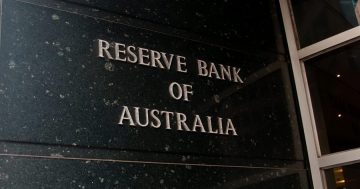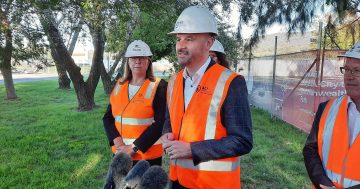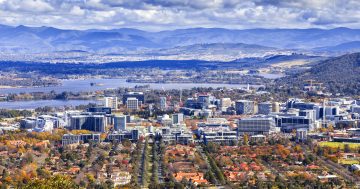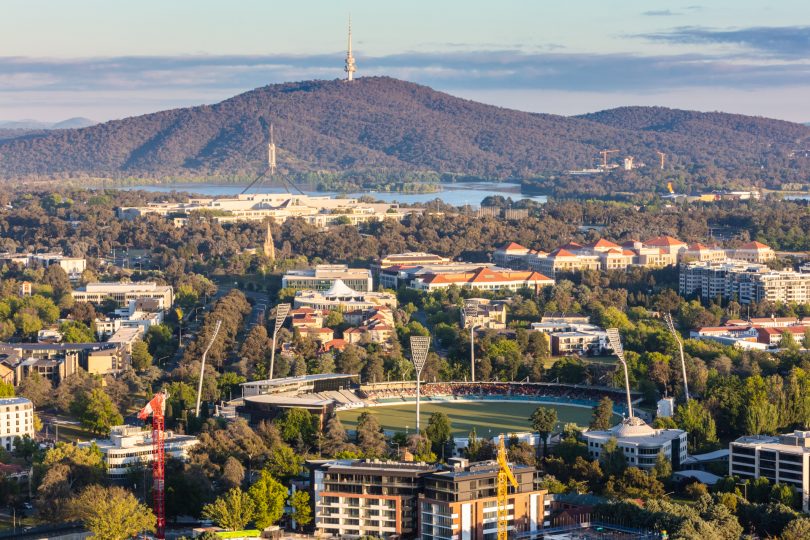
The general outlook for the ACT remains good for jobs growth. Photo: Thomas Lucraft.
The latest round of economic data points to a rebound in the ACT economy hit hard by Delta and Omicron disruptions.
Bendigo Bank chief economist David Robertson says while the Territory was hit harder than other states and territories in the last quarter of 2021, based on retail activity and unemployment rates, the outlook for the ACT is more positive. The unemployment rate for the ACT spiked during lockdowns to reach a national high of 6.6 per cent in October but is now back down to a national low of 3 per cent.
Mr Robertson said job ads are an excellent guide to future employment trends.
“Seek job ads fell in the ACT during the Delta lockdown and the Omicron spike over year-end but have bounced back in January, showing an increase of almost 3 per cent. That rebound is clear in the jobs data released on Thursday (17 March).”
The national unemployment rate now stands at 4 per cent, the equal lowest rate since 1974.
“The ACT unemployment rate is now down to 3 per cent and we are expecting fresh records to be set over the coming months.
“Underemployment is also down to 5 per cent for the ACT, demonstrating a strong, tight labour market, tighter than rest of Australia, although this will flow to higher interest rates nationally,” Mr Robertson said.
Youth unemployment remains high, but pleasingly, figures for the ACT were down in February, from 7.7 per cent to 5.9 per cent against a national figure of 9.3 per cent, a significant improvement, “but these figures tend to be a bit volatile”, Mr Robertson warned.

Bendigo Bank chief economist David Robertson. Photo: Bendigo Bank.
The ACT residential property market continues its upward trend. Dwelling values were up 0.4 per cent in February, up 24 per cent year on year, according to Core Logic data. The median value of residential property, houses and apartments, now sits at just over $900,000.
“That is good for household balance sheets but not for affordability, but it is likely the property market will level off as we lean into expected rate hikes,” Mr Robertson said.
Housing supply in the ACT picked up 3.2 per cent year-on-year, bucking the national trend, which generally had lower availability.
The Australian economy grew 4.2 per cent overall in 2021. The ACT was up 2.3 per cent year-on-year, picking up 2 per cent in the fourth quarter.
“This growth was naturally driven by consumer spending and household consumption as the Delta restrictions were eased.”
The stronger economic growth is expected to continue despite looming RBA rate increases and recent flood events.
“There will be inflationary pressures with events in Ukraine adding to supply chain bottlenecks, and obviously, the price of petrol is a visible sign of this, but the outlook is still looking strong. We will certainly keep an eye out to see how much spending is promised in the upcoming federal budget.
“But, the general outlook remains good for jobs growth, that should drive wages growth due to the tight labour market and the reopening borders will provide a much-needed reboot to the tourism industry.”
